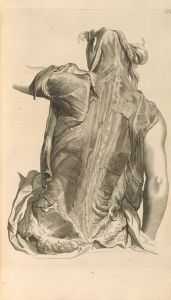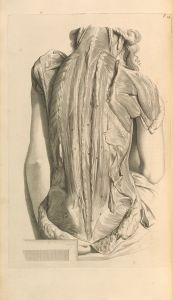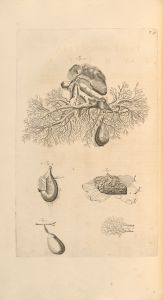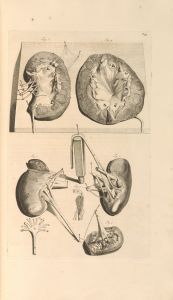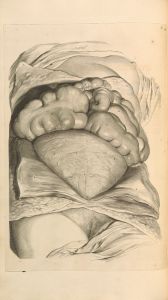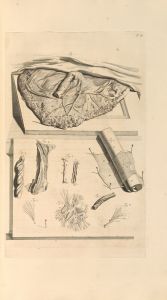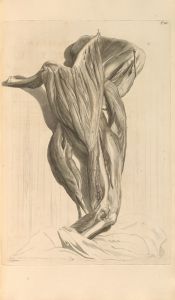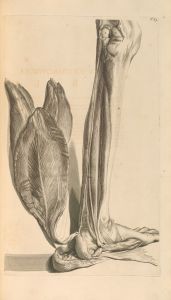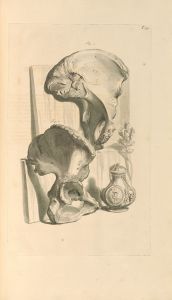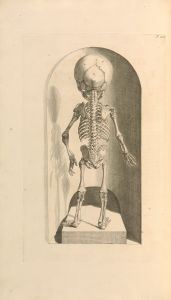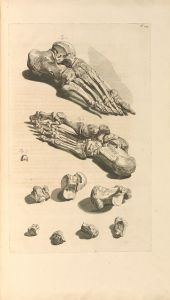
Anatomia humani corporis Pl.004
A hand-painted replica of Gerard de Lairesse’s masterpiece Anatomia humani corporis Pl.004, meticulously crafted by professional artists to capture the true essence of the original. Each piece is created with museum-quality canvas and rare mineral pigments, carefully painted by experienced artists with delicate brushstrokes and rich, layered colors to perfectly recreate the texture of the original artwork. Unlike machine-printed reproductions, this hand-painted version brings the painting to life, infused with the artist’s emotions and skill in every stroke. Whether for personal collection or home decoration, it instantly elevates the artistic atmosphere of any space.
"Anatomia humani corporis Pl.004" is an illustration created by the Dutch Golden Age artist Gerard de Lairesse. This artwork is part of a larger series of anatomical drawings that were included in the book "Anatomia Humani Corporis," which was published in 1685. The book was a collaboration between de Lairesse and the renowned Dutch anatomist Govard Bidloo.
Gerard de Lairesse (1640-1711) was a prominent painter and art theorist during the Dutch Golden Age. He was known for his classical and Baroque style, which was heavily influenced by the works of Nicolas Poussin and Peter Paul Rubens. Despite suffering from congenital syphilis, which eventually led to blindness, de Lairesse continued to produce significant works of art and contributed to the field of art theory.
"Anatomia Humani Corporis" was a groundbreaking anatomical atlas that combined detailed scientific observations with artistic excellence. Govard Bidloo (1649-1713), who was a professor of anatomy and medicine, provided the scientific expertise for the project. The book was intended to serve as a comprehensive reference for medical students and professionals, offering an in-depth look at the human body's structure.
The illustrations in "Anatomia Humani Corporis" are notable for their precision and artistic quality. De Lairesse's work on these plates demonstrated his exceptional skill in rendering the human form with accuracy and elegance. Each plate in the book meticulously depicts various aspects of human anatomy, from muscles and bones to internal organs.
"Anatomia humani corporis Pl.004" specifically focuses on a detailed anatomical study, likely showcasing a particular part of the human body with an emphasis on clarity and educational value. The illustration would have been accompanied by descriptive text provided by Bidloo, explaining the anatomical features and their significance.
The collaboration between de Lairesse and Bidloo was significant not only for its scientific contributions but also for its impact on the intersection of art and science. The detailed and aesthetically pleasing illustrations helped bridge the gap between these two fields, making complex anatomical information more accessible and engaging.
The publication of "Anatomia Humani Corporis" was met with both praise and criticism. While many appreciated the high quality of the illustrations and the valuable anatomical insights, some contemporaries criticized the book for its high cost and the perceived extravagance of the illustrations. Despite this, the book remains an important historical document, reflecting the advancements in both medical science and artistic techniques during the late 17th century.
In summary, "Anatomia humani corporis Pl.004" by Gerard de Lairesse is a significant work within the context of the "Anatomia Humani Corporis" atlas. It exemplifies the collaboration between art and science, showcasing de Lairesse's artistic talent and Bidloo's anatomical expertise. This illustration, along with the others in the series, continues to be recognized for its contribution to the fields of anatomy and art history.







